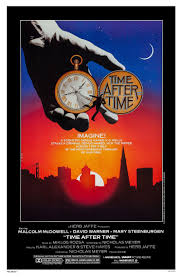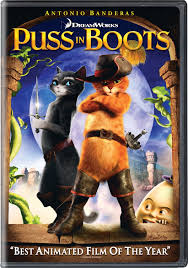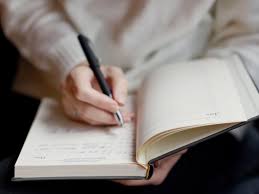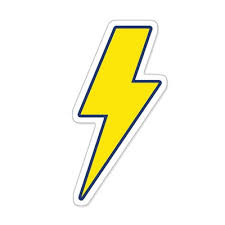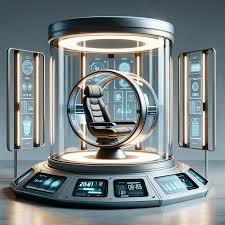February is here! That means 2025 is well on it’s way and it’s time to stock up the To Be Read pile with some fabulous new middle-grade reads.
It’s an extra special New Release’s month here at the Mixed-Up Files as two of our own have books coming out. Rosanne Parry’s latest, A WOLF CALLED FIRE, releases February 4th, and Sydney Dunlap’s RACING THE CLOUDS is out February 18. Happy book birthday, Rosanne and Sydney!!
Now, let’s get rolling with this month’s New Releases.
 A Wolf Called Fire: A Voice of the Wilderness Novel by Rosanne Parry (Author) and Mónica Armiño (Illustrator)
A Wolf Called Fire: A Voice of the Wilderness Novel by Rosanne Parry (Author) and Mónica Armiño (Illustrator)
The stand-alone companion to Rosanne Parry’s New York Times bestseller A Wolf Called Wander tells the wilderness survival story of the wolf pup known as Warm and is illustrated in black and white throughout. This Voice of the Wilderness Novel features extensive back matter, including a map.
Warm is the smallest pup, the one his father calls the heart of the pack. But all Warm sees is his bigger brothers Sharp and Swift, even his sisters Pounce and Wag, winning all the wrestling matches. Just as Warm is finding his place, enemy wolves destroy and scatter the pack. Warm helps lead the pups away from the fight, only to find himself alone with four pups to defend and feed. Can he be both the heart and the head of a new pack? Does he have to choose the aggressive leadership style of his father and brothers? Or is there another way?
A Wolf Called Fire is a stand-alone companion novel to A Wolf Called Wander. It’s inspired by Wolf 8, a real Yellowstone wolf who was the smallest of his pack and constantly bullied by his bigger brothers. Wolf 8 survived a tumultuous first year and grew up to be a different sort of leader—one who fought many rival wolves to submission but never killed any. He had a rare talent for mentoring young wolves and became the patriarch of the largest and most successful pack in Yellowstone by choosing a more collaborative and generous leadership style. Features black-and-white illustrations throughout and extensive back matter, including a map.
 Racing the Clouds by Sydney Dunlap
Racing the Clouds by Sydney Dunlap
If thirteen-year-old Sage had done one thing differently that day last November, everything would be fine. Only she didn’t, so she and her dad had to leave Philadelphia for a new life in middle-of-nowhere Virginia. Her dad has never actually said he blames her for what happened, but how could he not?
Sage is determined to push it all out of her mind, but then, just before summer vacation, she hears from the grandparents she’s never met. They want her to visit, and she realizes this could be her chance to mend the rift that’s kept everybody apart.
When she meets Grandmother Marion, though, Sage is sure her trip is headed for disaster. Except she wasn’t counting on making a new friend or rescuing a sweet stray dog. With them by her side, maybe she can find the courage to face what she’s been avoiding all along.
From the award-winning author of It Happened on Saturday comes a heartfelt and empowering story that explores the complexity of family relationships, the value of forgiveness, and how to find your way forward in a tough situation with resilience and hope.
 Sweet Valley Twins: Sneaking Out by Francine Pascal (Author) Nicole Andelfinger (Adapted by) Claudia Aguirre (Illustrator)
Sweet Valley Twins: Sneaking Out by Francine Pascal (Author) Nicole Andelfinger (Adapted by) Claudia Aguirre (Illustrator)
The Sweet Valley Twins are ready to rock out as the hottest band comes to town…too bad they don’t have permission to go! Will they sneak out to dance the night away or will it all fall apart? Find out in the next installment of the New York Times bestselling graphic novel series!
Everyone at Sweet Valley Middle School is going to the biggest concert ever…everyone except twins, Jessica and Elizabeth! Their favorite band is back in town but no matter how much they beg their parents they can’t get permission to go. Elizabeth is ready to sulk and stay home, but Jessica refuses to give up hope. She’ll see this band even if it means lying or leaving her sister behind.
Caught between her parents and her twin will Elizabeth sneak out with Jessica? Or will she blow the whole plan out of the water?
Get ready to rock, laugh, and cheer for the unstoppable duo as they navigate the challenges of friendship, family, and following their dreams in the next Sweet Valley Twins graphic novel.
 On Thin Ice by Jessica Kim
On Thin Ice by Jessica Kim
For fans of Disney’s GO FIGURE, a laugh-out-loud, heartfelt dual POV sibling-rivalry story by acclaimed author Jessica Kim
Twelve-year-old fraternal twins Phoebe and Dexter Bae are polar opposites in every way except for their love of the ice. Phoebe is hyperfocused on pairs figure skating, and Dex loves his hockey team. But when Phoebe’s partner injures his knee just two months before competitions and Dex gets cut from his team in favor of a new hotshot goalie from Canada, they’re both left spinning.
With their skating dreams dashed, their mother suggests that Dex fill in as Phoebe’s doubles partner. It’s a hard sell–the twins haven’t been close since their father passed away two years ago. For Dex, working with a perfectionist like Phoebe would be a challenge, but if it means he’d improve his skating technique enough to get back on the hockey team–and he’d have something to keep his mind off his dad–it’d be worth it. Phoebe isn’t thrilled either, but what choice does she have if she wants to bring home the gold, something that would’ve made her dad happy?
Can these siblings skate past their differences toward victory?
 Max in the Land of Lies: A Tale of World War II by Adam Gidwitz
Max in the Land of Lies: A Tale of World War II by Adam Gidwitz
Max Bretzfeld is back in Berlin–as a British spy. His most dangerous mission is about to begin in the much-anticipated sequel to Adam Gidwitz’s instant bestseller Max in the House of Spies.
Max is on a mission.
Well, two missions.
One has been assigned by his British spymasters: Infiltrate the Funkhaus, the center of Nazi radio and propaganda.
The other they have forbidden: Find his parents.
Max Bretzfeld was willing to do anything to return to Germany, even become a British spy. Training complete and forged papers in hand, the radio wunderkind’s missions have begun. But nothing is as he expected. His parents are missing. Nazi intelligence is watching him. And the lines between lies and truth are becoming more blurred every day.
 London Calling by James Ponti
London Calling by James Ponti
In this sixth installment in the New York Times bestselling series from Edgar Award winner James Ponti, the young group of spies stages a rescue in Rome in another international adventure perfect for fans of Spy School and Charlie Thorne.
Cairo, the newest member of the City Spies, takes the lead when his sister disappears in Istanbul. Determined to save the family of one of their own, the team risks discovery as their search leads them to Rome. Meanwhile, there’s been intel that seems to threaten the royal wedding about to take place in Westminster, bringing the team back to the UK on an official case for MI6. With so much security all over the city, it’s harder than ever for the City Spies to go unnoticed. Will their skills be up to the task?
 Investigators: Agents of S.U.I.T.: Wild Ghost Chase by John Patrick Green (Author) Christopher Hastings (Author) Pat Lewis (Illustrator)
Investigators: Agents of S.U.I.T.: Wild Ghost Chase by John Patrick Green (Author) Christopher Hastings (Author) Pat Lewis (Illustrator)
InvestiGators fans, rejoice and get ready to dive into the third volume of Agents of S.U.I.T.! With more than three million copies of InvestiGators in print, readers are primed for more GatorVerse action!
The first two volumes of AGENTS OF S.U.I.T. turned the spotlight to eager rookie agent Cilantro and the un-B-lievably B-loved B-Team of Bongo and Marsha. Now, in the globetrotting third book, new recruit Zeb the sheep joins the flock to help crack the greatest mystery of all! But, uhh…just what is the greatest mystery of all?
Pondering that conundrum is what has kept the dearly departed General Inspectre tethered to Earth long after he should have moved on to the great super-spy base in the sky. Having a ghost haunting the halls of S.U.I.T. wouldn’t be so bad…except he’s possessed Monocle to serve as his Earthly form! Zeb–along with Cilantro, Bongo, Marsha, and cameos from everyone’s favorite Gators–must decipher the series’ biggest mystery EVER to free their pal and finish the Inspectre’s unfinished business!
 All the Blues in the Sky by Renée Watson
All the Blues in the Sky by Renée Watson
# 1 New York Times bestselling and Newbery Honor author Renée Watson explores friendship, loss, and life with grief in this poignant novel in verse and vignettes.
Sage’s thirteenth birthday was supposed to be about movies and treats, staying up late with her best friend and watching the sunrise together. Instead, it was the day her best friend died. Without the person she had to hold her secrets and dream with, Sage is lost. In a counseling group with other girls who have lost someone close to them, she learns that not all losses are the same, and healing isn’t predictable. There is sadness, loneliness, anxiety, guilt, pain, love. And even as Sage grieves, new, good things enter her life-and she just may find a way to know that she can feel it all.
In accessible, engaging verse and prose, this is a story of a girl’s journey to heal, grow, and forgive herself. To read it is to see how many shades there are in grief, and to know that someone understands.
 It’s All or Nothing, Vale by Andrea Beatriz Arango
It’s All or Nothing, Vale by Andrea Beatriz Arango
A poignant novel in verse in which, after a life-changing accident, one girl finds her way back to her life’s passion. From the Newbery Honor-winning author of Iveliz Explains It All.
All these months of staring at the wall?
All these months of feeling weak?
It’s ending–
I’m going back to fencing.
And then it’ll be
like nothing ever happened.
No one knows hard work and dedication like Valentina Camacho. And Vale’s thing is fencing. She’s the top athlete at her fencing gym. Or she was . . . until the accident.
After months away, Vale is finally cleared to fence again, but it’s much harder than before. Her body doesn’t move the way it used to, and worst of all is the new number one: Myrka. When she sweeps Vale aside with her perfect form and easy smile, Vale just can’t accept that. But the harder Vale fights to catch up, the more she realizes her injury isn’t the only thing holding her back. If she can’t leave her accident in the past, then what does she have to look forward to?
In this moving novel from the Newbery Honor-winning author of Iveliz Explains It All, one girl finds her way back to her life’s passion and discovers that the sum of a person’s achievements doesn’t amount to the whole of them.
 Mountain Upside Down by Sara Ryan
Mountain Upside Down by Sara Ryan
A funny and heartfelt LGBTQIA+ middle grade novel set against the backdrop of family drama and a library funding campaign in a small town.
Alex Eager lives in Faillin, OR with her grandmother, a retired librarian. Life should be great for Alex, since she finally worked up the courage to ask her best friend PJ if they could be more than friends and she said yes. But their new relationship will have to be long distance, because PJ is moving. On top of that, Alex is worried that something is wrong with her increasingly forgetful grandmother. And to make matters worse, Faillin is holding a referendum on library funding, and things aren’t looking good. Will anything good for Alex ever last?
Mountain Upside Down is a beautifully crafted story of a thirteen-year-old girl finding her place in her family and her community. It’s a queer-positive story that doesn’t center coming out. It’s a story of a library’s role in a community that doesn’t feature book banning. And it’s a story of long-held family secrets and resentment that focuses not on final resolution but learning how to communicate again.
 Tear This Down by Barbara Dee
Tear This Down by Barbara Dee
From Barbara Dee, the critically acclaimed author of Maybe He Just Likes You, comes a middle grade novel about a girl who makes the choice to speak out against a problematic historical hometown figure no matter the cost–perfect for readers of Dress Coded.
For as long as Freya can remember, she has loved living in her cozy hometown of Wellstone. Not only is the town itself named for local and historical hero Benjamin Wellstone but everything in it: schools, beaches, and stores. There’s even a giant statue of him to remind everyone of the good things he did.
But while doing research for a big school project, Freya discovers that Benjamin isn’t the big hero everyone has been taught to believe. He had some redeeming qualities, but he also held incredibly problematic views towards women, believing they shouldn’t have the right to vote–or even to exist outside of the home. Disappointed by her revelation, Freya wonders if she could figure out a way to not only show what the hometown hero was really like but replace his statue with one of an unsung hero: local suffragette Octavia Padgett.
Though Freya knows not everyone will agree with her, she is shocked when her efforts cause even bigger issues than she could have imagined. Even her own parents seem uneasy with Freya’s cause. With the help of her beloved Nan, friends new and old, and the coolest librarian she’s ever met, can Freya stand firm and tear down outdated views?
See anything that you’re moving to the top of your To Be Read list this month? If so, please let us know in the comments.




